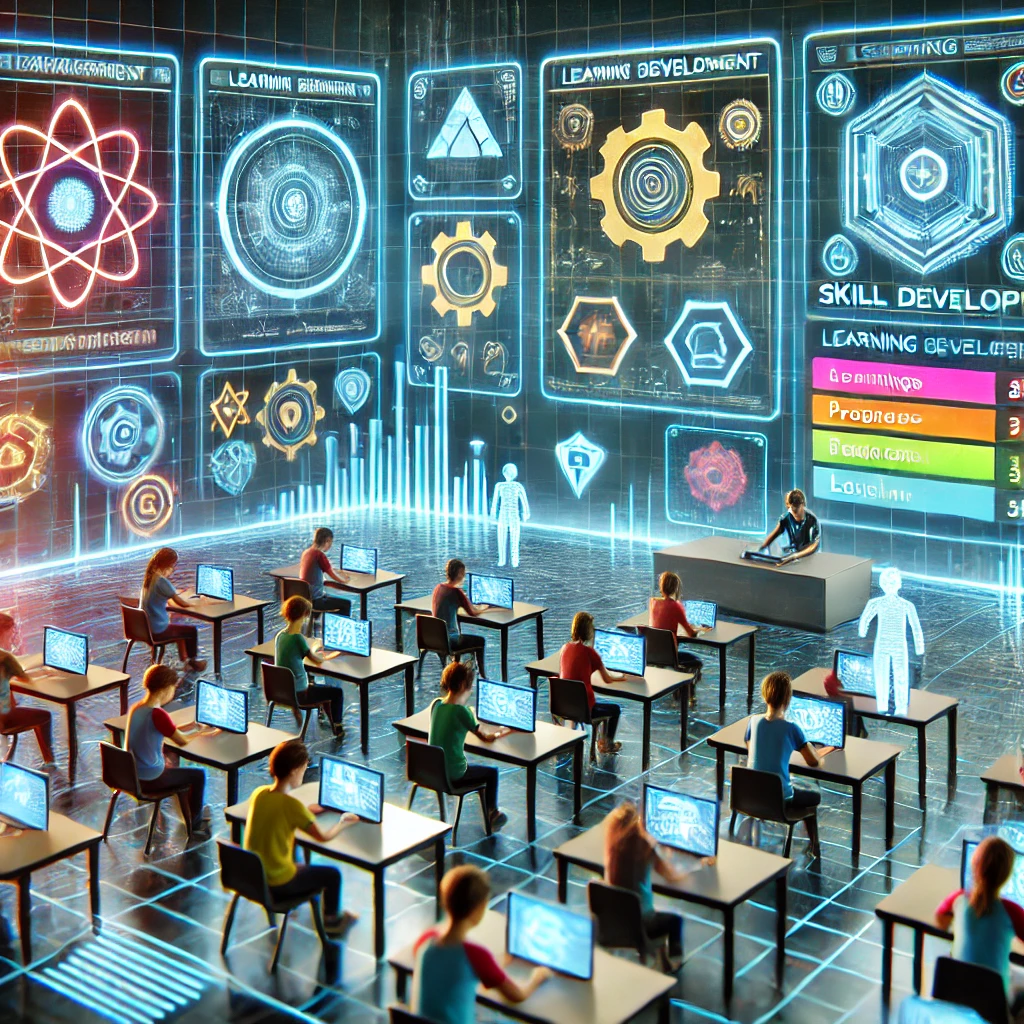Gamification in Skill Development: Making Learning Fun and Effective
Introduction
In today’s fast-paced world, traditional learning methods often fail to engage learners effectively. This is where gamification comes into play. Gamification applies game design elements to non-game environments, making learning more interactive, engaging, and effective. In the context of skill development, gamification helps learners grasp concepts more easily, retain knowledge longer, and apply skills more efficiently.
This blog explores the impact of gamification on skill development, its key elements, benefits, challenges, and future trends.
Understanding Gamification in Skill Development
Gamification is not just about playing games; it is about incorporating game-like elements into learning to improve engagement and outcomes. This includes elements like rewards, points, leaderboards, challenges, and storytelling to create an immersive learning experience.
Key Elements of Gamification in Learning:
Points and Badges: Learners earn points or badges upon completing tasks or acquiring skills.
Leaderboards: Ranking systems encourage healthy competition among learners.
Challenges and Quests: These provide motivation to achieve goals step by step.
Instant Feedback: Immediate responses help learners improve in real time.
Storytelling: Narrative-driven learning makes the process more immersive and relatable.
Why Gamification is Effective in Skill Development
Enhances Engagement
Traditional learning can be monotonous, but gamification keeps learners motivated.
Interactive elements make learning enjoyable and boost participation rates.
Encourages Active Learning
Instead of passive listening, learners participate actively, improving retention.
Quizzes, simulations, and virtual scenarios help learners apply concepts practically.
Improves Retention and Recall
Studies show that people remember better when learning is fun and interactive.
Repetition and rewards reinforce learning in a positive way.
Boosts Motivation
Rewards, challenges, and leaderboards create a sense of achievement.
Friendly competition and recognition encourage continuous learning.
Develops Soft and Technical Skills
Problem-solving, decision-making, and teamwork are honed through gamified learning.
Gamification is used in fields like IT, healthcare, and customer service training.
Real-World Applications of Gamification in Skill Development
1. Corporate Training Programs
Companies use gamification to train employees in new skills efficiently.
Platforms like Duolingo use gamification to teach languages effectively.
2. Vocational Training
Simulated environments help learners acquire hands-on skills before real-world application.
Example: VR-based simulations for construction or healthcare training.
3. Education Sector
Schools and universities implement gamified learning modules to make subjects more interesting.
Examples include coding platforms like Codecademy and Khan Academy’s reward-based learning.
4. Government Skill Development Programs
Initiatives like Skill India integrate gamification into e-learning courses.
Online portals offer certification programs with reward-based progression.
Challenges in Implementing Gamification for Skill Development
High Development Costs
Designing gamified learning systems requires investment in technology and software.
Need for Personalization
Not all learners have the same pace; customized learning experiences are crucial.
Balancing Fun and Learning
If not designed well, gamification may focus too much on entertainment rather than skill-building.
Technology Access and Literacy
Not all learners have access to advanced technology, especially in rural areas.
Future Trends in Gamified Skill Development
Virtual Reality (VR) and Augmented Reality (AR)
Immersive experiences will make learning even more engaging and practical.
AI-Powered Personalized Learning
AI-driven analytics will tailor training programs based on individual progress.
Blockchain for Certifications
Secure and verifiable digital badges will authenticate skills and qualifications.
Mobile-First Gamification
With mobile penetration increasing, gamified mobile apps will dominate skill training.
Conclusion
Gamification in skill development is revolutionizing the way people learn. By making learning fun and interactive, it enhances engagement, retention, and motivation. While challenges exist, advancements in technology will continue to refine and improve gamified learning solutions.
For skill development programs, integrating gamification can be a game-changer—empowering learners with the skills they need in an enjoyable and effective manner.
FAQs
How does gamification improve skill development?
Gamification makes learning interactive and engaging, improving retention and motivation.
Can gamification be applied to all types of training?
Yes, gamification can be used in corporate training, vocational skills, education, and even government programs.
What are some popular gamification techniques?
Points, badges, leaderboards, storytelling, and real-time feedback are commonly used.
Is gamification expensive to implement?
While initial investment can be high, digital advancements are making gamification more accessible.
What are the future trends in gamified learning?
AI, VR/AR, mobile-based learning, and blockchain-powered certification will shape the future of gamification in education and skill development.




